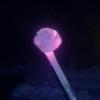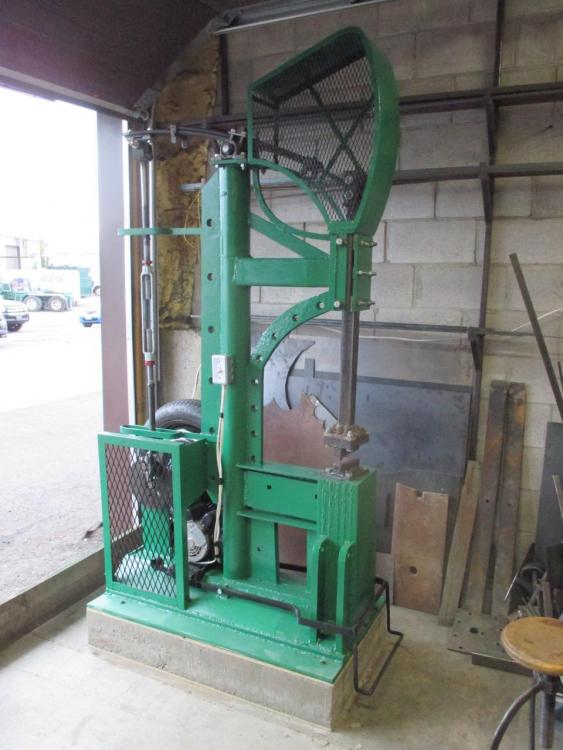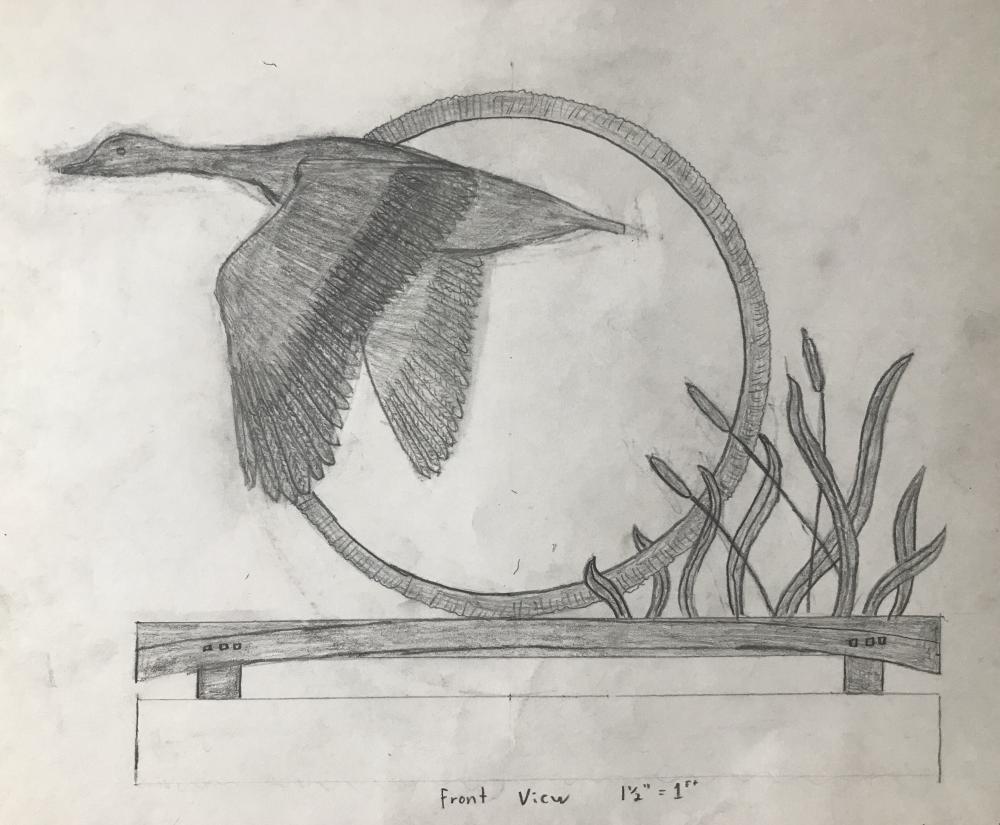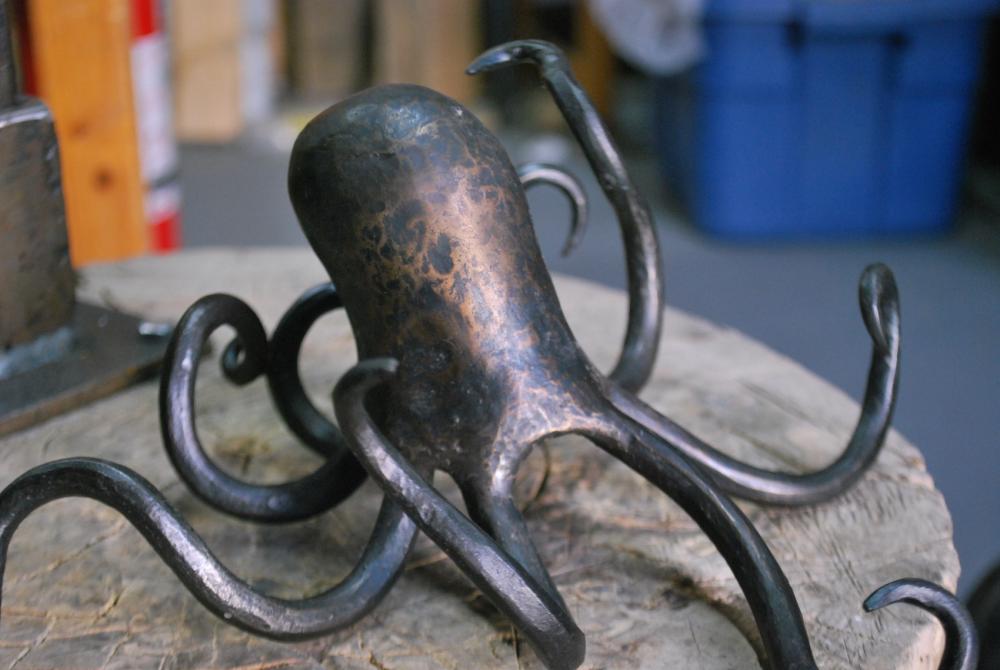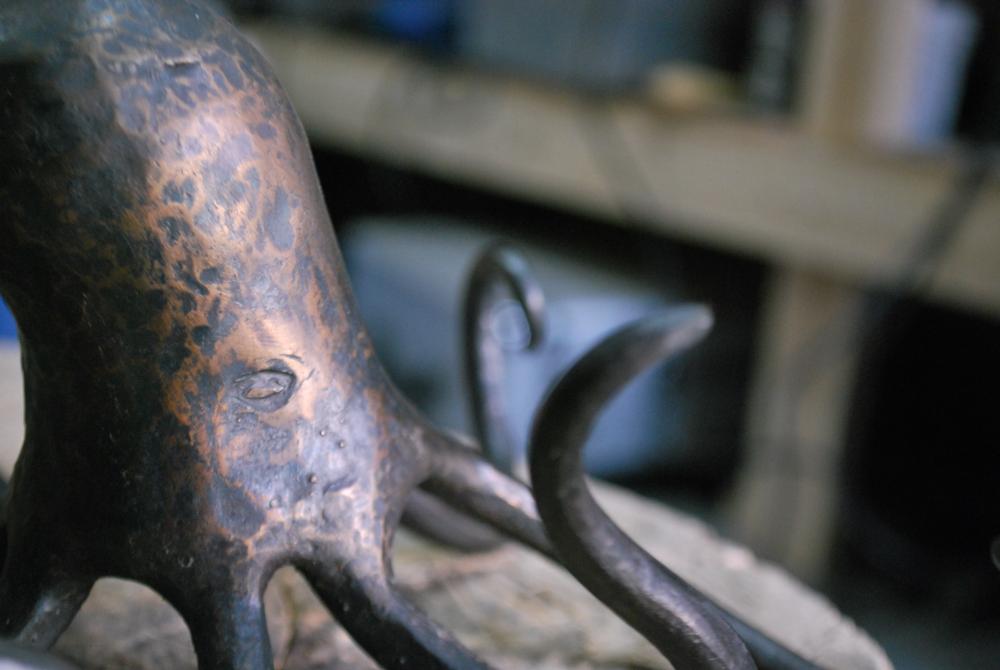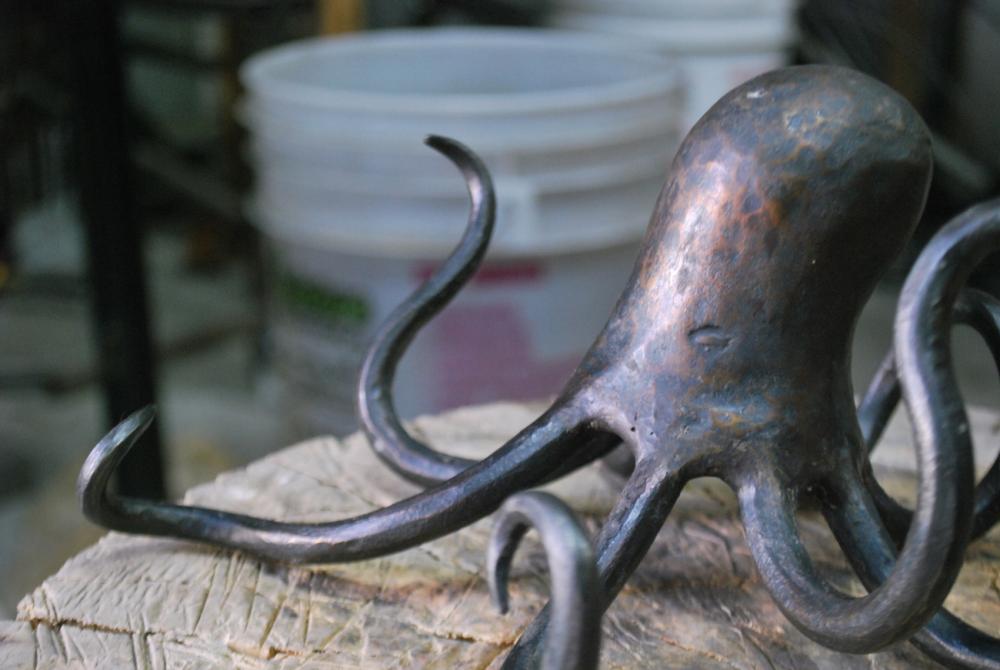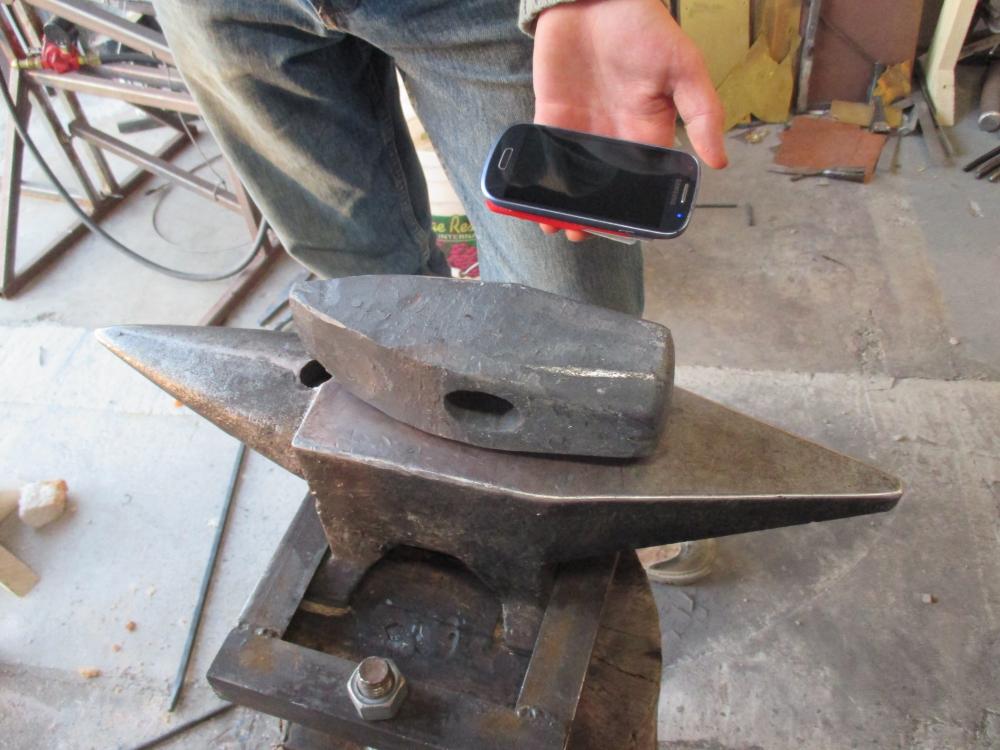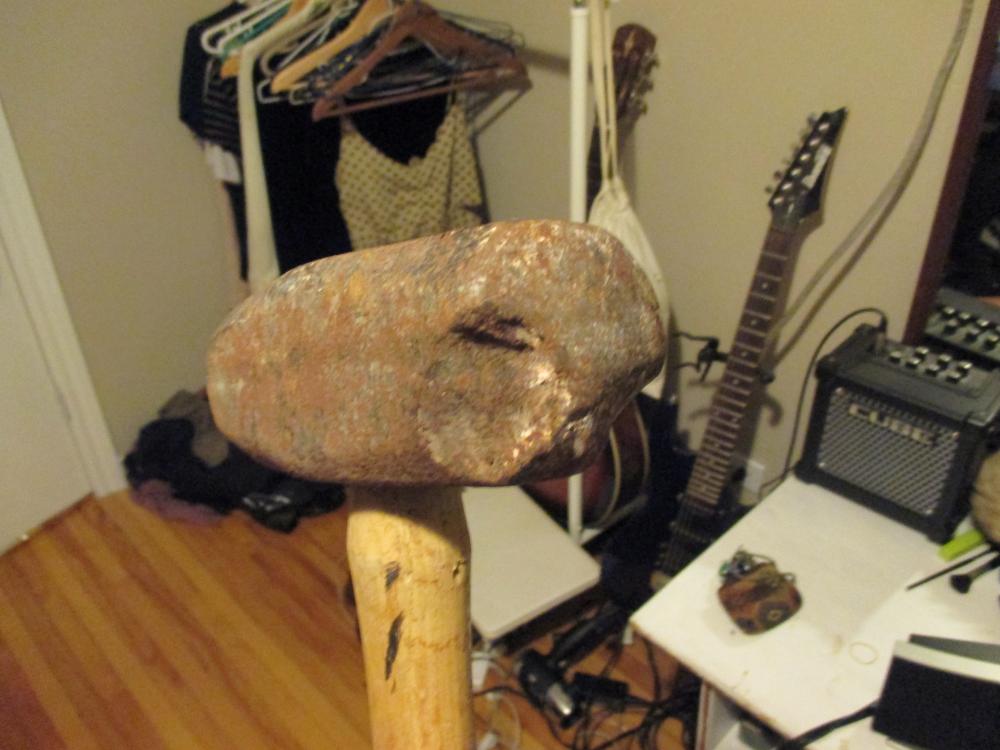
JoshuaK
Members-
Posts
18 -
Joined
Recent Profile Visitors
1,059 profile views
-
Advice for optimizing my shop built hammer
JoshuaK replied to JoshuaK's topic in Power Hammers, Treadle Hammers, Olivers
I've got a 1HP motor on there now. I think that should be overkill, at least where I'm at now, right? -
Advice for optimizing my shop built hammer
JoshuaK replied to JoshuaK's topic in Power Hammers, Treadle Hammers, Olivers
It's got 7" of travel, not including spring, so it's probably more like 10-11". I think it looks like a small amount because I left lots of room between the guide and the anvil so I could get a maximum amount of height adjustability, so that I could attach very tall top dies. I suppose I could increase the travel, and only use that setting with short dies, since I think a larger range would stop me from using my tallest dies. I'm thinking increasing the speed might be the most broadly applicable improvement. I think that a longer stroke would hit harder and give you almost the same BPM, since that comes from the relationship between the drive wheel and the motor, but for each blow the ram would be moving faster since it needs to cover more distance in the same length of time. -
Advice for optimizing my shop built hammer
JoshuaK replied to JoshuaK's topic in Power Hammers, Treadle Hammers, Olivers
Do you mean turn the turn buckle to raise the ram up a little bit? I think you're right, in this video it looks like it might be a little low. I usually try to leave at least a 1/2" gap between the die and my work piece, when it's in a resting position. Definitely, some. I'm not sure how I would gauge that though. I don't have that much of a frame of reference. I have some experience with commercial machanical hammers, but not a tone. I'm sure there's less snap than an LG gets, but also I think I'm running slower than an LG usually would. -
I'd like to introduce you to my hammer, Sancho Pound-za I built it last year, and it has served me well so far, but I feel like I could squeeze a bit more work out of it, hopefully without breaking anything important in the process. there are three ways I can think of to get more work out of it. In order of how good an idea I think they are: -add weight to the ram. Right now the weight of the ram, including dies is about 30lb. The anvil weighs about 400lbs, so I figure I should be good to add 10lbs. I was thinking I could essentially just add a 10lb spacer where the dies clamp on. That way I could remove it if I want a lighter ram weight, like for plannishing armour. -replace the cylinder thingy on the motor that contacts the tire with a wider one. Right now I've got one on there that's 1.5" diameter (if I remember correctly), and with a motor running 3470 rpm, I get about 4bps. Of course more bps is probably better, but I imagine there's a point where it will put too much stress on the machine. -increase the stroke length. Right now I have the eccentric point set to 3.5", I believe, but I also have a smaller setting, something like 2" that I use for plannishing armour. I could just pop another hole in that plate and increase the stroke length. Similar to the last option, I'm just not sure at what point i'll be over stressing the machine and risking breaking something? I suppose if there's a risk of over-taxing the machine and breaking something, I could of course just replace or reinforce anything that might break right? Like, is the spring/helve strong enough? I'm using approx 1/2"x3" leaf springs. The helve started life as a much larger stack of springs, so I could fairly easily add more to the stack. I might have to rebuild the top part of the ram, with the rollers, if I want to, say, double up the spring for the whole length. Anyhow, I'd love to get some ideas and feedback on this, and hopefully save myself a bit of trial and error. PS here is a link to a video of the hammer running:
-
That could be something to look into. I found a local place that does bronze plating, possibly other types of plating. Customer does not want to spend more though, so for now I'm just going to stop bringing up the issue with them.
-
Yeah, I would probably need to get myself a quote on stainless before getting too ahead of myself there, eh? I was also thinking about how people say it takes significantly more energy to work, so I'd also have to account for that. What sort of plating options do I have?
-
Hey guys, So I've been asked to do this sculptural piece for a wooded walking area of a local hospice. They like the designs and everything, but we're hitting a bit of a snag in deciding on a finishing technique. I haven't done a whole lot of outdoor pieces, and when I have, the customers either liked the curated rust patina, or a simple utilitarian paint job. In this case, the customer wants something that looks natural, so they're not interested in powder coating, and they're adamantly against any form of painting, for whatever reason, and they just don't like a rust patina. So here I am wondering where that leaves me. I figure I can offer the wirebrush forged finish with clear coat and a promise that they'll need frequent maintenance, and really, that might be something they would somewhat reluctantly accept. They'll have someone keeping the grounds anyway. But as I have never tried this, I really don't know how much maintenance it will really be. I'm located in Ottawa, Ontario. So we're nowhere near the ocean, but it tends to be humid as hell all summer. Another option which I'm almost beginning to take seriously is offering it in stainless steel. I have never forged stainless steel, so I imagine there would be a learning curve, and I have also never welded stainless, so we'd really be in uncharted territory, but it might be nice to have that as a tool in my toolbox for future projects. I'm just starting out in business, so I am willing to go through some short-term pains for long term gain. I imagine I'd need to ask for a pretty serious price bump for stainless, but I don't know how much. Like 30% more at least? One other thing that occurred to me was some kind of hot zinc spray. I often see that listed as a finish in the Anvil's Ring, but I haven't been too successful in looking it up. From the sounds of it, people often use this as a base-coat before paint? Well, it always looks good in the magazine anyway, and I suspect I could sell my client on something they already think they don't want if I've got nice examples to show. Whoops, I meant to post this in the problem solving forum. I guess it's still relevant here though.
-
Thanks guys! I used bar stock for the arms, probably like 5/16 or something, and I used 16g sheet for the head. Originally, I tried to raise it in one piece, but I was working really fast, and I guess I probably had a rich flame (or is it lean? Whichever one has too much air) and I lost a lot to scale, so once I got it to shape, it was too thin to behave. So I just welded up a little can, ground off the welds and knocked in the corners. I ended up making a punch for the eyes. Not sure if I'll ever find another occasion to use my octopus eye punch.
-
-
Sorry, it was a weird point in the process for me to take a picture. The positive stamp was punched into the face of the flat punch next to it. Then the negative punch was used to punch the knife. After heat treating of course.
-
Hey so it looks like a couple of threads have gotten stuck together now? That's confusing. Anyway, an update on the one about the beat up old sledge hammer. All the negative responses almost had me thinking that it really wouldn't work out for some reason. I did it anyway, and it worked out fine. Sure a lot of work though. It's annealing now, but I won't get a chance to heat treat it until next week.
-
Thomas, I was thinking that was a possibility as well. Smoggy, what would be your bench mark for appropriate skill?
-
It doesn't say cast steel on it, I just assume it is cast because of the lines running along the sides of the hammer. But i really don't know that much about industrial processes. Maybe it is forged?
-
Hey Guys, thanks for the feedback. Rashelle, I am also planning to make some top and bottom fullers in the next few months, but I want a sledge with a cross pein specifically for drawing out the edges of 3/8" plate for forging helmets. In this case I would prefer speed to accuracy. Thomas, I wouldn't say that I have a lot of experience making and heat treating high carbon steel, but I have a decent amount. I've made a handful of hammers, including two sledges, and they have held up fine so far. I'm not too worried about the unbalanced weight. I have a fair amount of material to deal with, so if I feel that it will be a problem, I can just remove some material from one end. I'd say it's about an 8-10lb head. I think I should be able to clean it up relatively quickly with my bench grinder and an angle grinder. I figure I'll take it up to a bit of a polish to see if I can see any obvious deep cracks. If there is one that I can see, it will probably shop up during forging. Yes, I was planning on making some suitable tongs for the job, and I do have a striker lined up. I don't think the handle will be too short if I reattach it. It's 29" long now, so I think it will still be okay if it's 26.5" Anyways, I'll at least clean it up and see how it looks. If I go through with it, and the whole thing ends up not working out, then $15 and an afternoon and $10 of fuel seems like a good price for a lesson.
-
So I bought a sledge hammer off kijiji today for $15, and it's really beat to XXXX. Looks like someone has been smashing big rocks with it or something. My plan is to grind all the chunked out parts smooth, and then re-forge one end into a cross-pien. So my question is two-fold: one, do you think I can even forge a cast hammer head? I assume I should be able to if it's cast steel, but i imagine cast iron would go very badly. The second question is, do you think it's worth trying, or should I just resurface the better face and use it as is rather than risk destroying the whole thing? Either way is not that big a deal, since it's only $15, but I figured I would quickly check to see what you guys think.
